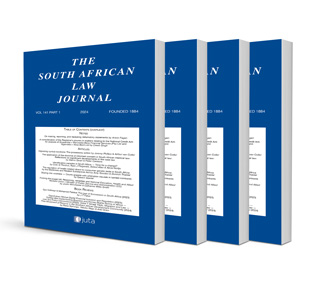
Twin Peaks: South Africa’s financial sector regulatory framework
Authors Andrew Godwin, Timothy Howse, Ian Ramsay
ISSN: 1996-2177
Affiliations: Associate Professor, Melbourne Law School, The University of Melbourne; Research Associate, Melbourne Law School, The University of Melbourne; Harold Ford Professor of Commercial Law, Melbourne Law School, The University of Melbourne
Source: South African Law Journal, Volume 134 Issue 3, 2017, p. 665 – 702
Abstract
The National Assembly of South Africa has passed a Bill adopting the ‘twin-peaks’ model of financial regulation, which sees regulation split into two broad functions: market conduct regulation and prudential regulation. This article compares the structure of the twin-peaks model in South Africa with the structure in other jurisdictions. In doing so, it identifies the strengths and possible weaknesses of the model in South Africa, and the extent to which it reflects international experience. The evolution of the legislation reveals that South Africa has drawn increasingly on international experience, particularly the experience in the UK. However, it also reveals characteristics that might be regarded as unique to South Africa. Two areas are particularly noteworthy in this regard. First, the regulatory framework attempts to achieve a balance between the need to ensure operational independence on the part of the regulators, and the need to recognise the role and involvement of the executive government. Secondly, by comparison with international experience (even that in the UK) the design of the regulatory co-ordination framework appears to involve a high level of potential overlap between the co-ordinating bodies, and also a highly prescriptive approach to achieving effective co-ordination.